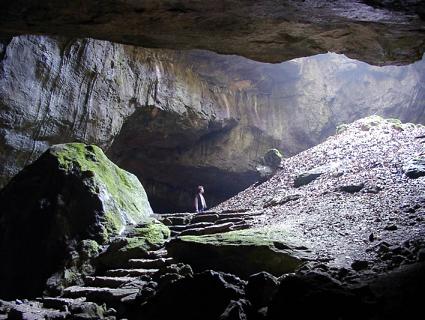After deciding that Krakow was too distant for a last-minute trip, I just opened up a map and started looking at the border to see what was close. I quickly discovered Kostryzn/Küstrin at the confluence of the Warta and Oder rivers. It's only an hour and twenty minutes away trains leave from Berlin to Kostrzyn hourly. The town lies next to a large nature preserve and it also contains the leveled ruins of a medieval fortified city.
So, early on the appointed day, we took our sandwiches and went to catch the train.

We left our bicycles at home this time, but if we go again, we should bring them along. There is a generous path through the nature preserve which would make for a great bike ride.
We really had no idea what to expect. I was hoping that it would feel like a foreign country at least, but because it is so close to Germany and Berlin, I wasn't sure it would. Vigo was actually a bit nervous about being in a country where none of us could speak the local language. Kostryzn and Küstrin used to be a single city in Prussia, but the new borders drawn after WWII cut the city in half. I read that the Germans who stayed on the Polish side were driven out or murdered after the war. It definitely feels like Poland there now, and the German side feels like Germany. For example, when we were buying our candy and kielbasa, none of the people we interacted with were able to communicate with us in German. I was surprised by that.
The first things we had to take care of after getting off the train were finding a bathroom for Vigo and getting some Polish money. Changing money was a breeze and seeing that non-euro currency really gave us the feeling of being in a Foreign Land.

Once we had the cash, we popped into a Chinese restaurant to ask to use the bathroom. Is there any country where a Chinese restaurant is not immediately recognizable as such?

We got another injection of foreignness when confronted with the baffling choices of signage on the bathroom doors. Circle or triangle... circle or triangle?

Once those basic necessities were out of the way, Vigo cleverly suggested that we should investigate the local and potentially weird candy. We went into the nearest grocery store. There was a lot of chocolate and many candy bars incorporating wafer cookies. There were also a lot of very nice hard candies and really nothing particularly shocking. The funniest thing we could find was this small bowl of pharmaceutical-looking oblong candies being passed off as some kind of magic bean. Beans... sure.

We walked through the town, spending some time at the local park, to the river and the canal. There were guys fishing all along the banks and the general atmosphere was friendly.

After strolling up the canal a little bit, we decided to check out the ruins of the old city and walk back to Germany and catch the train in Küstrin instead of leaving from the same station we came into. Walking back through the town, we noticed one or two older buildings. 95% of the city was leveled during the war, and the older buildings really stand out among the Eastern post-war boxes.


There used to be a really serious medieval fortification here. Fredrich the Great was imprisoned here by his father when he was caught trying to run away with his boyfriend (sad story, look it up if you want to be bummed out). It was also a major port for a long time.

It was occupied by the French for a while and burned to the ground during Napoleon's retreat, but it's true obliteration came after the war, when the old city was dismantled so that the bricks could be used to rebuild elsewhere. The city gates have been rebuilt for tourists and you can see the remains of the old quais and embankments. Some of the paving stones are still there and some cellars remain. Otherwise, it's all gone and if they didn't keep the flora in check for tourists, you would not know that a city had been in that spot.


After strolling around the old ruins, we headed back to Germany on foot. We were impressed by the old derelict border crossing station.

We saw the best entrance to the nature preserve going over the bridge between Poland and Germany. Next time, we would get off in Germany and walk over to the nature preserve entrance on the bridge.
The exact border of the two countries, in the middle of the bridge, is marked by a German trash can. I don't know why exactly we found this so funny, but we did.

The other highlight of our return trip was coming across this collection of exotic birds on our way to the train station.

In conclusion, here are some tips for anyone who might be thinking about a day trip to Kostryzn:
Bring your bikes. The path in the nature park looks like a great ride.
People will not speak German or English. A couple phrases in Polish are worth the effort.
You have to buy the last bit of the ticket over the border on the train. You actually get the ticket a bit cheaper if you buy the whole ticked on the train instead of just the last leg.
The Brandenburg ticket is good after 6PM as far as Küstrin-Kiez, so if you are returning in the evening with a group of 3-5 people, that would be a good deal.
The fishing must be great. There were guys fishing all along both the river and the canal.
More pictures here



































